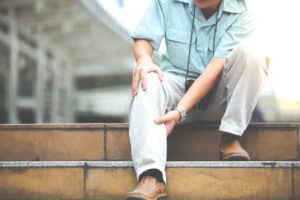
Which Parts of the Body Can Peripheral Vascular Disease Affect?
PVD can affect circulation in any part of the body outside the brain and heart. However, it most commonly disrupts the blood flow in the lower extremities, such as the feet and legs.
Occlusive and Functional Are the Two Main Types of PVD
Although occlusive peripheral vascular disease typically affects the legs, it can also develop in the arms and shoulders. The most common cause of occlusive PVD is atherosclerosis.
Other reasons occlusive PVD may develop:
- Pressure from a cyst or tumor located outside the vessel
- Inflammation of the blood vessels
- Irregular muscle growth within the wall of a vessel
Functional peripheral vascular disease is less common. With functional PVD, environmental changes, such as temperature fluctuations, cause the blood vessels in the arms and legs to dilate and constrict.
If someone has functional PVD, an exaggerated response to environmental changes can occur due to:
- Nerve disorders
- An inherited blood vessel defect, such as Grange syndrome
- Drugs
- Injuries
Recognizing Peripheral Vascular Disease
PVD is progressive, which means the affected blood vessels continue to narrow. Symptoms only become evident at the end stage of this disease.
Potential symptoms of peripheral vascular disease:
- Pain in the lower extremities while performing physical activity that diminishes after resting is the classic symptom of PVD
- Some other symptoms associated with peripheral vascular disease are aches, pain, or cramping in the buttocks and hips while walking
However, according to the CDC, 4 in 10 people with PVD do not experience any leg pain. Nonetheless, here are some physical signs you can watch for.
Physical signs that may indicate PVD in the leg:
- Smooth, shiny skin
- Hair loss
- Muscle weakness
- An absent or faint pulse in the feet
- Skin that feels cool
- Toes that feel numb or are cold
- Ulcers or sores on the feet or legs that neglect to heal or heal slowly
Schedule a PVD Evaluation at the Vascular Institute of Virginia
To schedule an evaluation, please call 703-763-5224 or use our contact form to request a peripheral vascular disease evaluation. Our team at the Vascular Institute of Virginia has offices in Fredericksburg, Woodbridge, and Fairfax, Virginia, so you can choose the office that is best for you.

